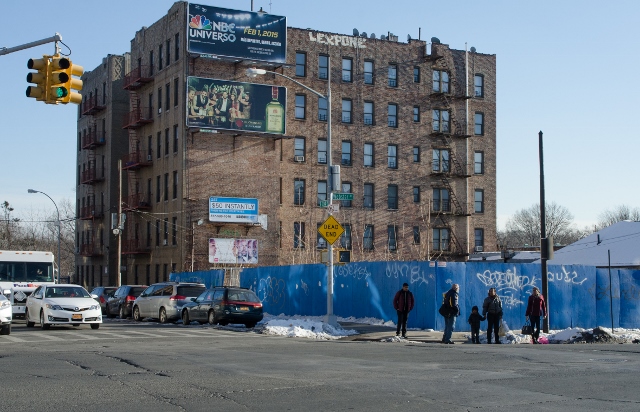
By JANAKI CHADHA
The Doe Fund’s recent decision to build a $29.5 million supportive/affordable housing project at a vacant property on Webster Avenue comes at a time when real estate transactions have seen a major uptick along the northern corridor.
The property, once the home of a family-owned vehicle repair shop, has sat vacant for years until The Doe Fund purchased the lot in 2013 to make way for Webster Green at 3100 Webster Ave. The 82-unit, eight-story building will be split between affordable housing tenants and those living with HIV or AIDS. Across the street is a portal to a variety of small businesses that fuel retail activity in the neighborhood.
But the never ending question on supportive housing is whether it fits into the overall mission of community building. Definitions on community building vary some, with developers’ views on neighborhood building differing from longtime residents whose vision foregoes a swell of supportive housing sites.
On its surface, the ulterior motives of supportive housing developers are never rooted in destroying a neighborhood. Most of the time, deciding on a site boils down to location and opportunity.
Alexander Horwitz, a spokesman for The Doe Fund, said that the Webster Avenue site was chosen because, “The property was affordable and in an excellent location, which made it ideal for housing that would support the community.” He added “there was an RFP issued by HASA for new supportive housing, so it all worked together well. Whenever we have the opportunity to serve a population in need and help usher new investment in a neighborhood and community, we do everything we can to make it a reality.”
Community Board 7, the advisory panel where Webster Green is located, has had several meetings with The Doe Fund, frustrated over the nonprofit’s decision to build on Webster Avenue. Horwitz said that “big changes naturally cause apprehension” and that the community concerns are understandable.
Horwitz pointed to the pros of such a development, citing a 2008 study by NYU’s Furman Center that concluded that supportive housing can actually raise property values in an area. “It’s a big win for everyone,” he said. “The people who will live there finally have access to the affordable, comfortable, safe housing and services they need, and the rest of the community is uplifted along the way.
Scot Hirschfield, vice president of Ariel Property Advisors, a real estate firm that tracks trends and transactions, said it’s a “tricky question” to determine whether Webster Avenue could have seen a development site that reflects the overall makeup of the area.
“What’s most important,” said Hirschfield, “is that the land is being developed and that it’s making a positive impact on the community.”
Hirschfield noted that there’s no upward trend in supportive housing projects in the borough as of late, though rezoning has increased buildable square footage in several locations and attracted developers due to “more funding available for larger development sites.”
Jean Hill, CB7’s chair on Housing and Land Use, expressed concerns that an increase in supportive housing developments is not what the Board wants. Her opposition has amplified following major rezoning in 2009 on Webster Avenue that would welcome more residential and commercial properties. Since then, a mix of supportive housing sites were proposed, beginning with Concerned for Independent Living.
“That’s not why the area was rezoned,” said Hill. “We want to be able to support our small businesses in that area and help them increase and we’d like to see some more commercial businesses come in.”
Much of the opposition is not born of a fear that the site will negatively affect the neighborhood, but that it is a misuse of what Hill called “a prime location.”
But Cynthia Stuart, chief operating officer of the Supportive Housing Network of New York, said that there’s always concern about supportive housing before it’s built, but “once it happens, the community is delighted that it is there.”
In a recent statement of community district needs submitted by CB7 to the city, the Board cited that “the Bronx has taken on more city financed supportive housing in the past decade than any other borough” and explained that there is “a prevailing feeling in [CB7] we have received a disproportionate share of this housing stock.”
Editor’s Note: An earlier draft of this article misstated Alexander Horwitz’s name.





The city decided in the 60’s to “dump” on the Bronx because of (and in some cases forcing) changing demographics. That mentality still carries on – since “oh well most of it is poor it doesn’t matter now”.